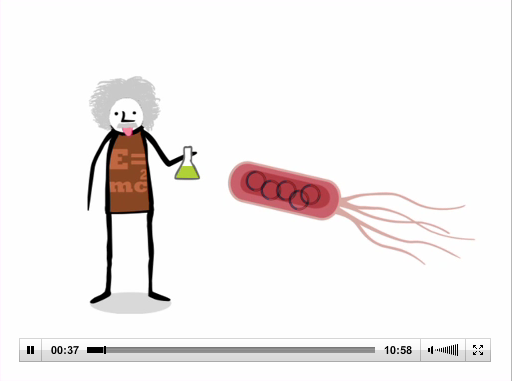Thank you for checking out our “30 days of Science Education” series. Use Science Education videos to introduce undergraduates to the lab.
On October 30 we introduced Molecular Cloning—the process of making numerous copies of a DNA fragment, like a gene, by introducing it into a bacterium that will replicate it.
 The most commonly used bacteria in molecular biology research and transformation is E. coli, which also happen to inhabit your lower intestine.
The most commonly used bacteria in molecular biology research and transformation is E. coli, which also happen to inhabit your lower intestine.
Cells that have the ability to readily take-up this DNA are called competent cells. And although transformation occurs naturally in many types of bacteria, scientists have also found ways to artificially induce and enhance a bacterial cell’s competency. In this video, "Bacterial Transformation: The Heat Shock Method" we discuss one of the ways this can be done: the heat shock transformation. In this video we review what heat shock transformation is, how it works, the principle behind it and how to successfully transform bacteria in the lab.
 After you learn how to perform this fundamental scientific method, we ask that you do one more thing ... show your support! Take part in our 30 Days of Science Education contest; send a photo of your lab as you preform gel electrophoresis to phil.meagher@jove.com. And please, be creative!
After you learn how to perform this fundamental scientific method, we ask that you do one more thing ... show your support! Take part in our 30 Days of Science Education contest; send a photo of your lab as you preform gel electrophoresis to phil.meagher@jove.com. And please, be creative!
You could win a $50 gift certificate or some sweet JoVE swag! Find the details here.

